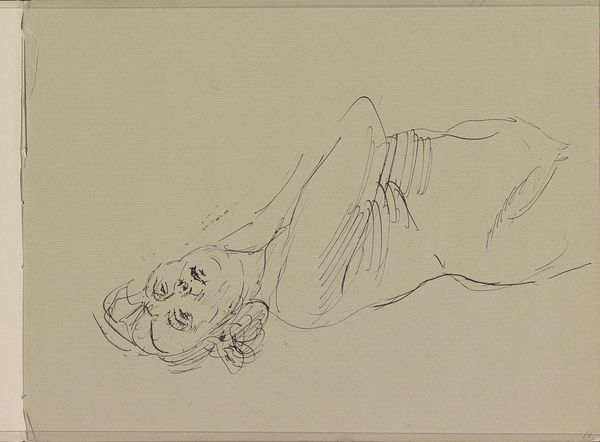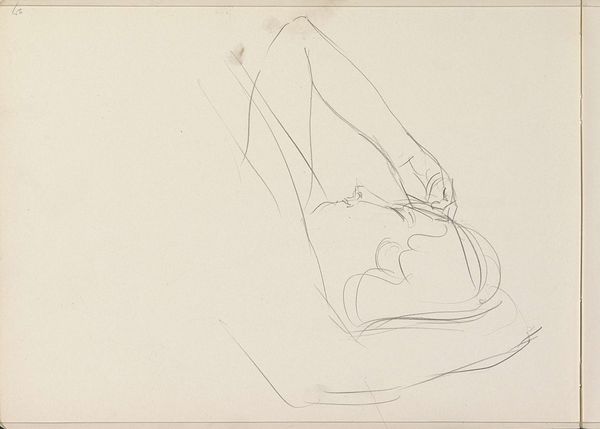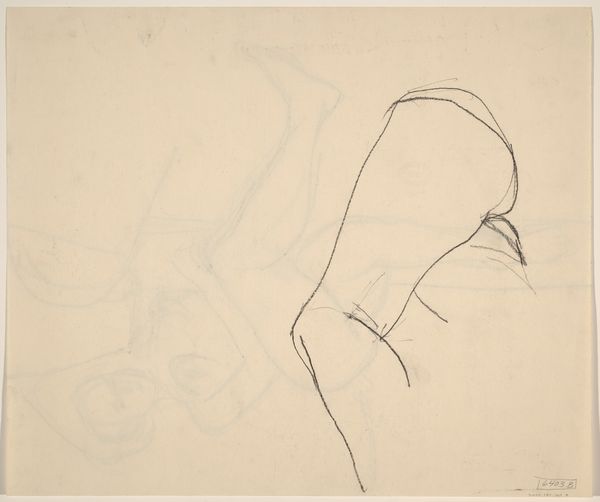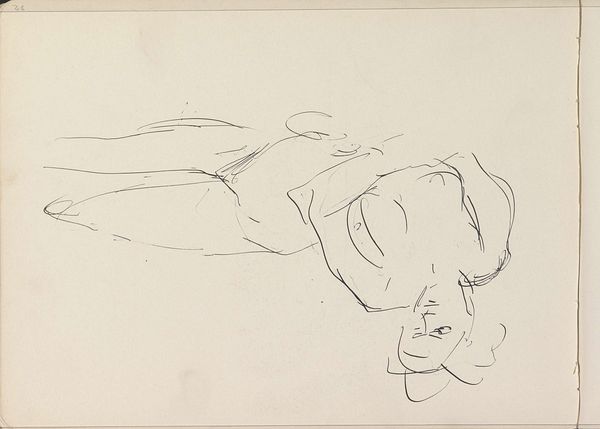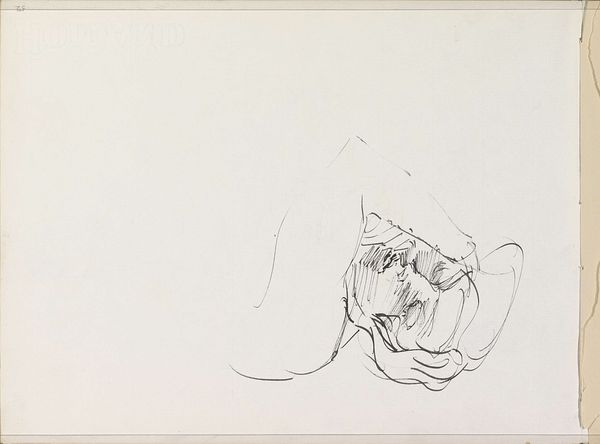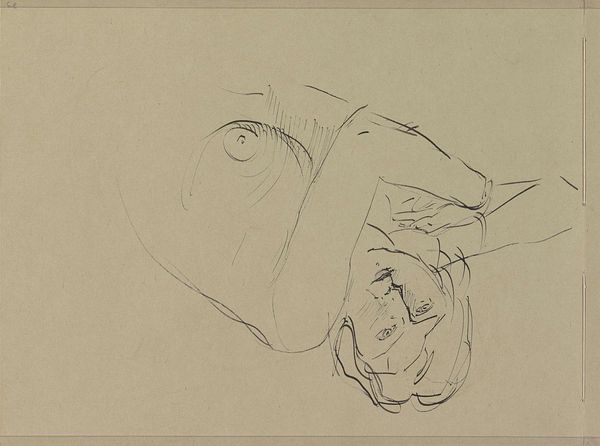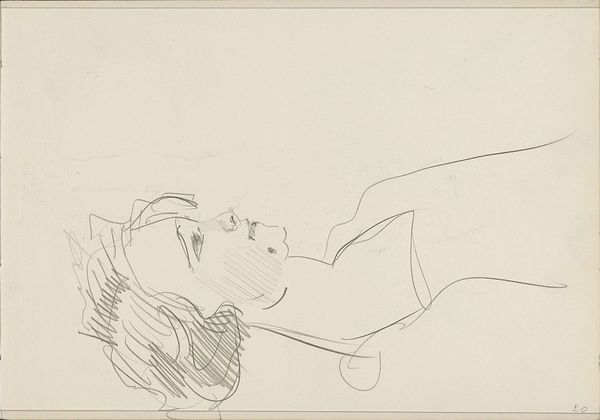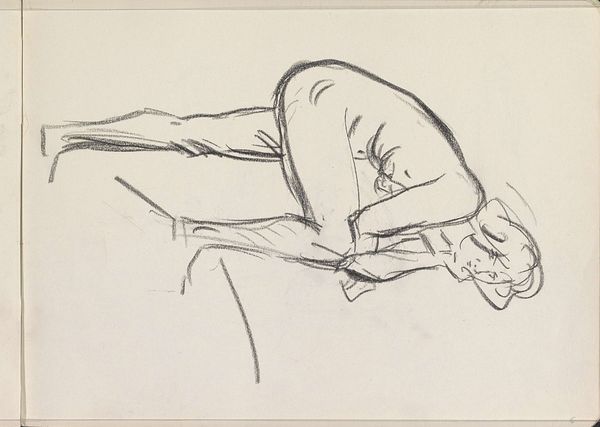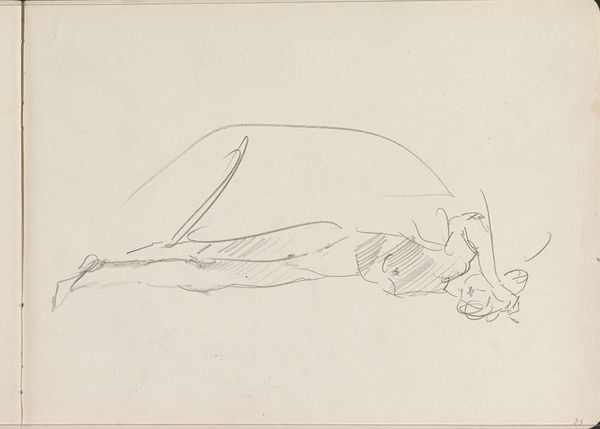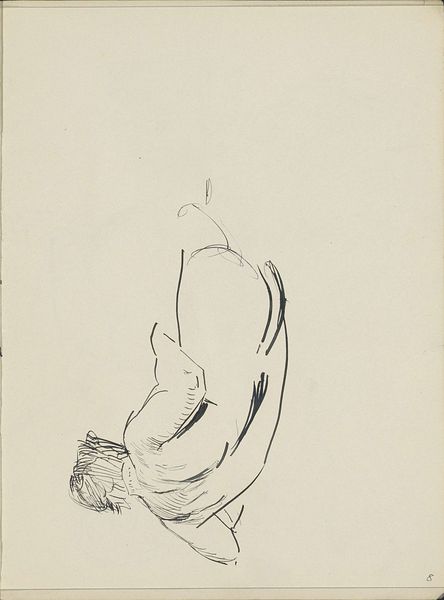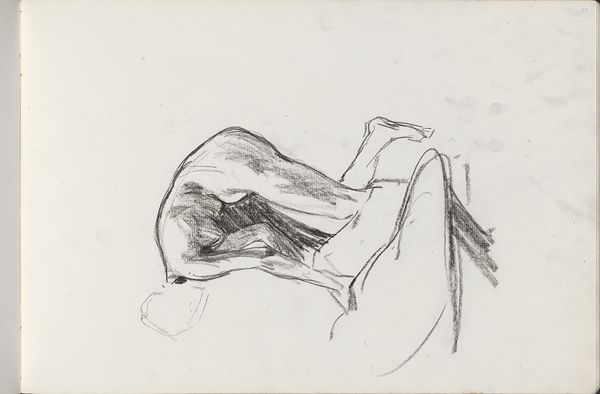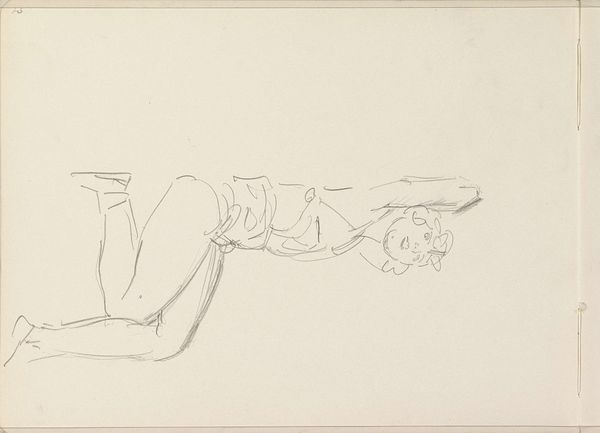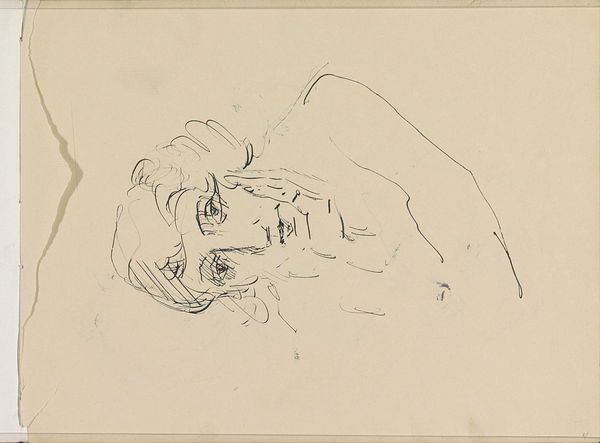
drawing, pencil
#
drawing
#
pencil sketch
#
figuration
#
pencil
#
nude
#
realism
Copyright: Rijks Museum: Open Domain
Editor: So, this is "Slapende vrouw" by Isaac Israels, made sometime between 1875 and 1934, and rendered in pencil. It’s striking in its simplicity, almost ephemeral. How would you approach analyzing this sketch? Curator: I am drawn to the act of its making. This is a pencil drawing; therefore, it is reproducible, which carries specific socio-economic implications for the consumption and understanding of the nude figure. Considering Israels was working in a rapidly industrializing society, what does the shift to easily replicable artworks say about societal values and accessibility to art? Editor: That's interesting! I hadn’t thought about it in terms of mass production. It raises questions about who could afford art, or have access to it, in that time. Does the “Realism” tag associated with this piece, and its being a pencil sketch, inform your analysis of the “figuration” and “nude” themes, regarding who the likely target consumer might be, perhaps from a social class perspective? Curator: Exactly! Was this sketch intended for the bourgeois home, challenging or reinforcing their existing perceptions of beauty, labor, and value? Or perhaps it served as a study, contributing to larger paintings destined for wealthier patrons, thus placing this particular sketch within a workshop’s assembly-line of image production and distribution? The pencil medium isn't accidental. Editor: So, the value lies not just in the image itself, but in understanding its material origin and how that origin relates to the social fabric. Thank you. That gives me a totally different perspective! Curator: Indeed. The materiality reveals so much. It forces us to examine not just the ‘what’ but the ‘how’ and ‘why’ of art within a specific societal framework.
Comments
No comments
Be the first to comment and join the conversation on the ultimate creative platform.
